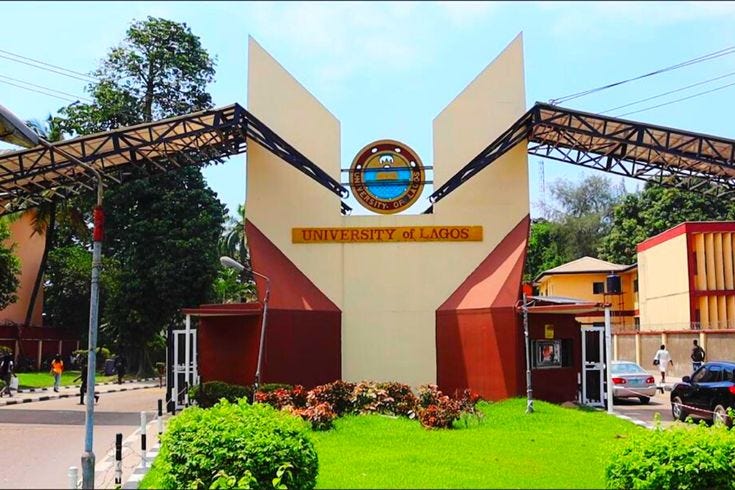Faculty of Engineering Wins Prestigious ANSYS Grant
It is a well-known fact that tuition, fees, business partnerships, government funding, donations, education programs, and research grants are the main sources of income for all universities to run their activities, and the University of Lagos is no exception. That’s why it's unsurprising that the best faculty in the university—Faculty of Engineering—has secured a whopping $15,000 research grant to train students and lecturers to use ANSYS simulation software.
When looking for a faculty for “doings”, look no further than the Faculty of Engineering.
(Image of Unilag Front Gate: (62) Pinterest)
What is ANSYS?
ANSYS is a powerful simulation software for engineering analysis and design. It enables engineers and researchers to virtually test and optimise products before creating prototypes. In addition, it helps engineers predict how products will behave in the real-world, allowing for efficient and economical development across a range of industries, such as aerospace, HVAC, and automotive.
A number of research grants and programs, one of which was won by our distinguished senior lecturers, have been established with the sole purpose of encouraging and assisting researchers to innovate and push forward the boundaries and applications of ANSYS. With that being said, let's discover more about our celebrities and the research grant in question.
Background of the Grant
The ANSYS Funded Curriculum Grant is an award given by ANSYS, an American multinational company based in Canonsburg, Pennsylvania, to support their mission of teaching and enhancing students' aptitude in the fields of engineering, science, and design.
Educators at accredited educational institutions can apply for the $5000 grant by submitting ideas for new, innovative ANSYS curricula, or enhancing the existing ones in undergraduate engineering departments. The courses must meet predetermined standards by integrating ANSYS technologies with proven teaching and assessment methods, including project-based learning and active learning techniques.
Of all the numerous applications, Dr. Olabode Olakoyejo, Dr. Olayinka Adewunmi, and Dr. Adekunle Adelaja—esteemed lecturers within the faculty—were selected. Talk about doings.
About the Winners
Dr. Olabode Olakoyejo is a prominent lecturer at the institution who attended the University of Pretoria in South Africa. He specialises in Computational Heat Transfer, Thermodynamics, and Fluid Mechanics.
Dr. Olayinka Adewunmi is also a senior lecturer at the university, having completed her master's degree at the University of Lagos, PhD at the University of Pretoria, and the Kaufman Teaching Certificate Program at the Massachusetts Institute of Technology in 2019. She’s an expert in Computational Fluid Mechanics.
Finally, Dr. Adekunle Adelaja is an associate professor at the university with a specialty in Thermofluids and Energy Systems.
What Does This Grant Mean for the University?
There are several implications of the university winning the grant. First off, this display of academic ingenuity will put the University of Lagos in the spotlight, both nationally and globally, solidifying its position as one of the top two universities in Nigeria. Furthermore, the $15,000 grant will be used to support research projects, hire additional staff, purchase equipment, and cover travel expenses for collaborations and conferences.
Finally, the scientific community is a small, close-knit community, and this grant would increase the reputation and standing of the lecturers and the university. This would enable the university to further attract and welcome quality lecturers, as well as open more grounds for the university to operate on a higher academic field than it was initially, enabling them to apply for higher grants.
Future Plans for the Grant
The purpose of the grant was to present new teaching curricula for ANSYS in universities, so we can expect this to affect a lot of final year students whose projects have to do with the software.
The university might also develop programs to help the students across the faculty learn to use the software. There are about as many possibilities as the pages on their paper, but as for how the university will handle it, would be up to the management. However, this will open up the university to a variety of possibilities, and I for one am looking forward to what’s to come.





